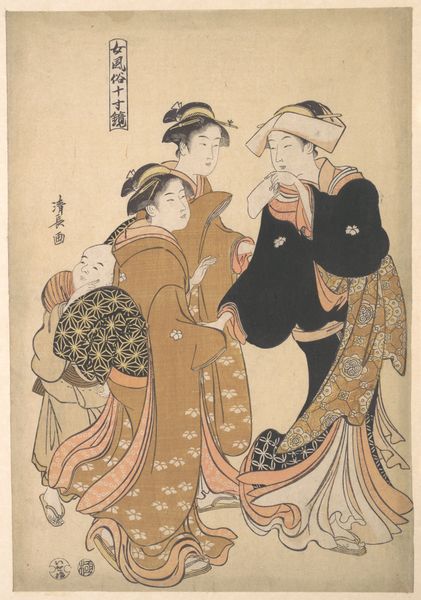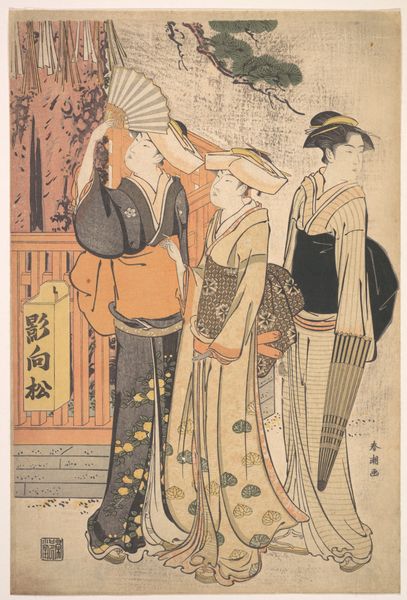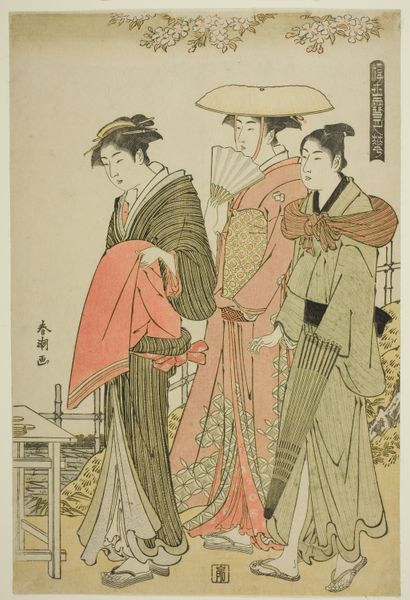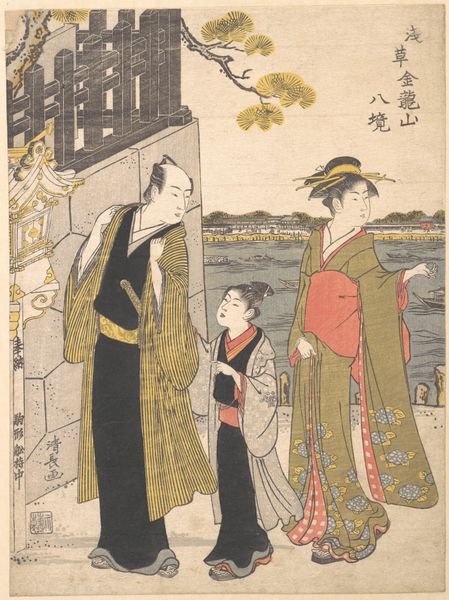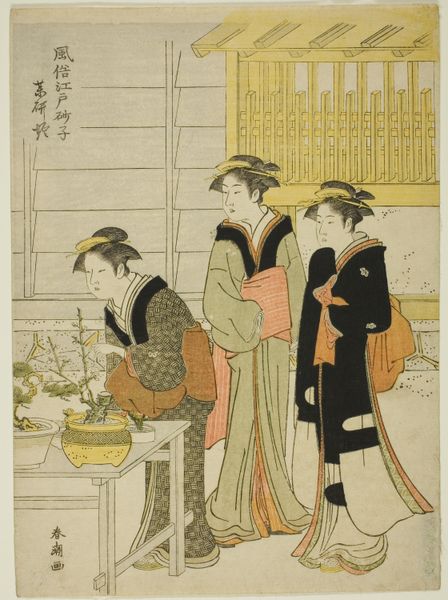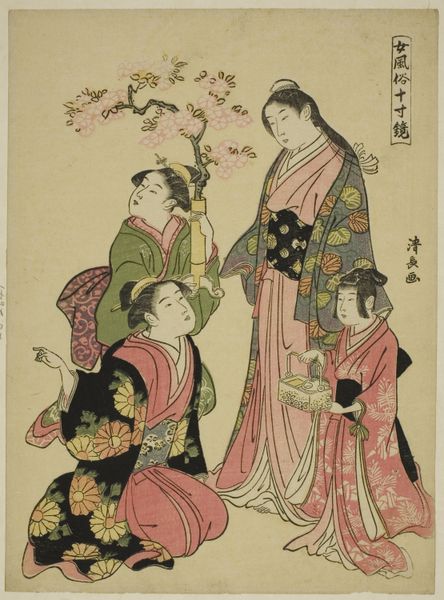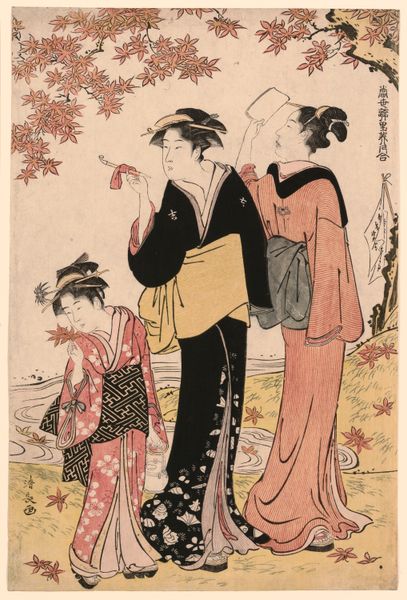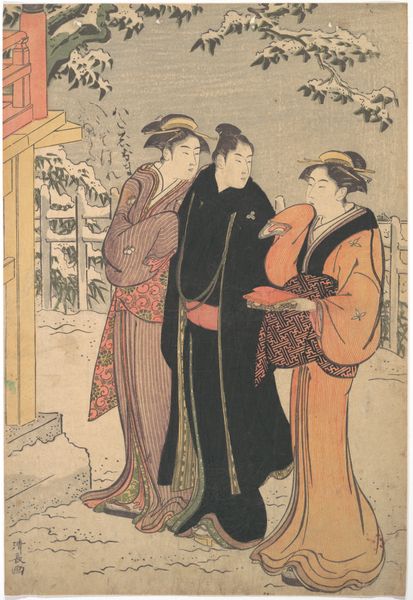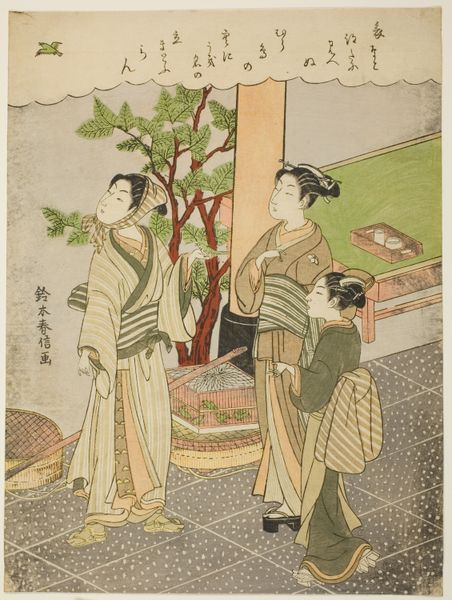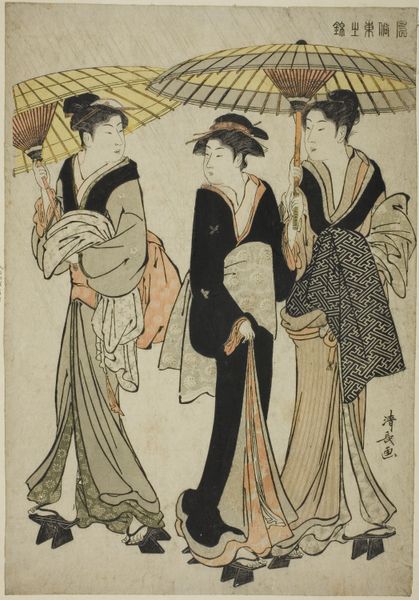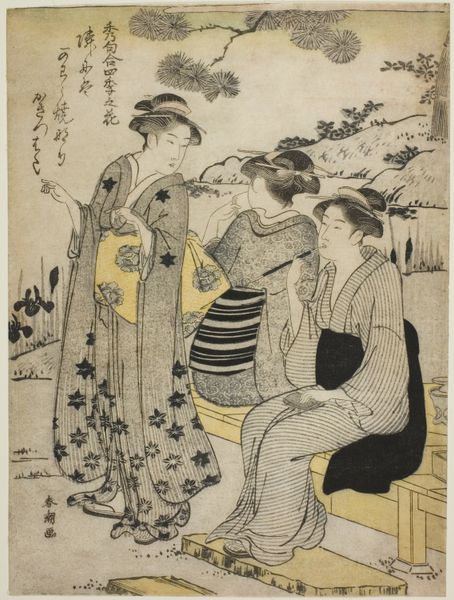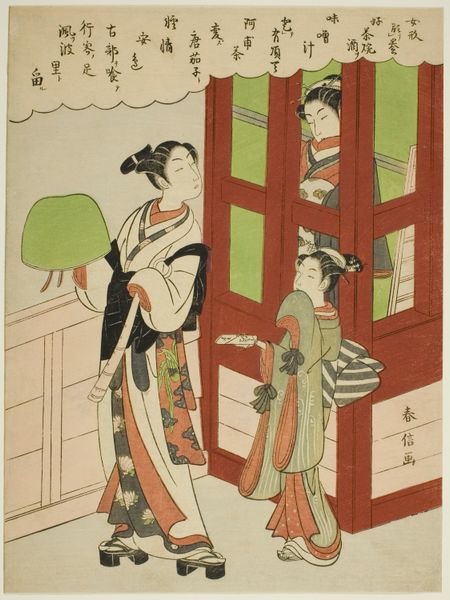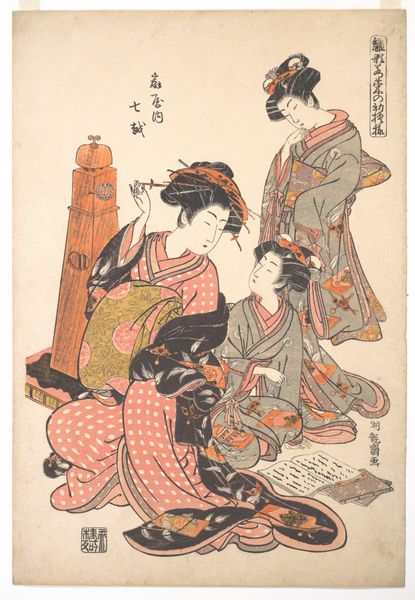
The Eleventh Month (Juichigatsu), from the series "Popular Customs of the Twelve Months (Fuzoku juni ko)" c. 1780 - 1801
0:00
0:00
print, woodblock-print
# print
#
asian-art
#
ukiyo-e
#
woodblock-print
#
genre-painting
Dimensions: 26.4 × 20.2 cm (10 3/8 × 7 15/16 in.)
Copyright: Public Domain
Curator: The work before us is a woodblock print by Katsukawa Shuncho, from around 1780 to 1801. It's titled "The Eleventh Month (Juichigatsu)," part of his series "Popular Customs of the Twelve Months (Fuzoku juni ko)," currently held at the Art Institute of Chicago. My first thought is about the layering of garments on display... Editor: Layering is right. I am struck by a very strong, muted energy – a hushed scene. Despite all of the figures, the faces seem subtly melancholic and averted as they seem to turn away from us as viewers. The entire palette seems dampened and appropriate to colder seasons. It’s like watching figures move through fog. Curator: Exactly, that’s very much Shuncho's strength – suggesting stories with such subtlety. In Ukiyo-e prints like this, clothing tells a story as well, especially the number of layers— they speak to wealth and status, right? The detail is exquisite, consider the textile patterns and how they almost vibrate against each other, from geometrics to natural florals. It brings so much to consider from the social position of the figures on the print to the nature of beauty and ephemeral arts. Editor: And the artist cleverly guides the viewer with an understanding of cultural memory – even to an audience centuries removed from the time of origin. These are women who have things that are important on their minds; we’re just not fully privy to them, although maybe Shuncho is making a comment about motherhood through time by including a child wrapped on one figure. Curator: Perhaps – it is certainly something worth further contemplating and research. One wonders if he thought about posterity. These are figures we remember from the stories told on surfaces of ceramics and fabrics, and how those designs were often meant to signify the future and a continuation of legacy. Editor: It all circles back, doesn't it? We imbue things with such great cultural and emotional weight over the span of history. Curator: Absolutely. This makes these fleeting glimpses even more valuable – they capture specific cultural moments so poetically.
Comments
No comments
Be the first to comment and join the conversation on the ultimate creative platform.
